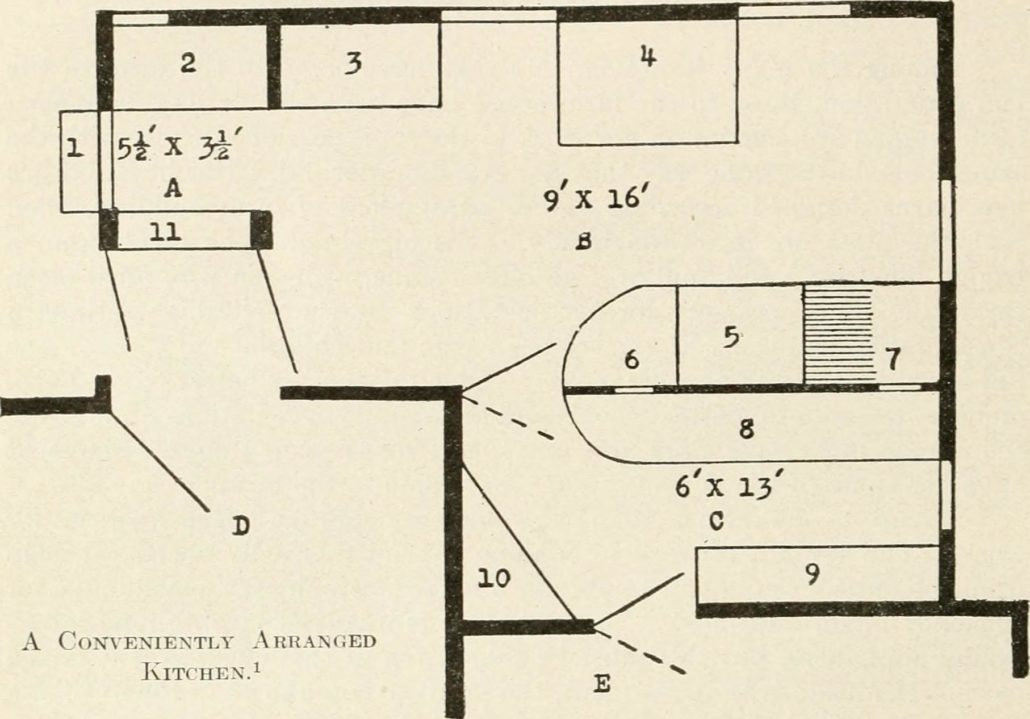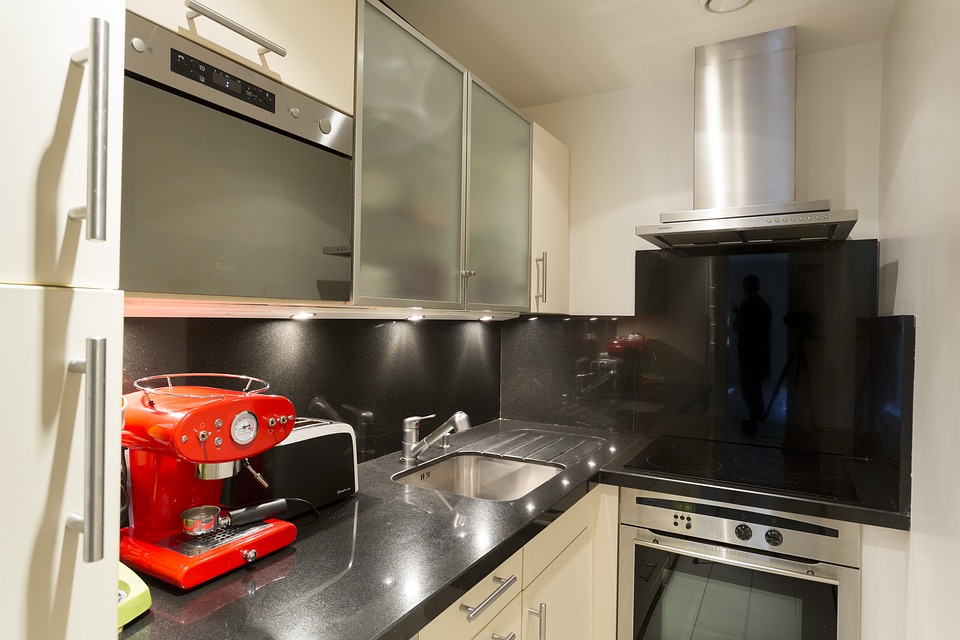Everything You Should Know About Kitchen Remodels
Anyone who has ever done a kitchen remodel has heard plenty of horror stories from people they know who have remodeled their kitchens in the past. You may have heard about the massive appliance that ripped the molding off the door when it was brought into the house. You may have heard a story about a concrete countertop that was poured onsite only to crack three months later. A familiar horror story that you might have heard is the contractor that was paid in advanced and never showed up to do the job and then disappeared. Stories like these are widespread. Over the past decade or so, kitchen renovations have become increasingly popular.
Kitchen remodeling is so popular that there are dozens of home improvement shows on television, and most of them focus on the kitchen.
If you are planning to trade your fridge for a stainless steel side-by-side or if you are swapping out your countertop with a soapstone island, you want to be sure to do things right. A perfect remodel should create a more functional workspace, a comfortable area, and a kitchen that will be the envy of everyone who walks through the door. To make you’re remodeling easier, we have created a guide to some significant kitchen remodeling disasters and the best ways to avoid them. The guide includes tips on hiring, planning, budgeting, and living through the remodel. Our 10-point plan will help you create the kitchen of your dreams without all of the headaches associated with a renovation.
Finding the Best Contractors
Most homeowners would love to remodel their kitchens. According to attorneys around the country, kitchen remodels are a leading cause of customer complaints and lawsuits. If you want to find a reputable, qualified contractor, you should get recommendations from friends, family members or co-workers who have recently redone their kitchens. Before choosing the best contractor, there are three things that you should keep in mind.
The Three Truths About Contractors
#1 A contractor is only as good as their last job.
There are many contractors who hire new subcontractors or laborers. Therefore, they won’t be working with the same crew that they used when they did an excellent job for your friend three years earlier. When you have shortened your list of potential contractors down to three, you should ask for references and make sure that one of them is their most recent customer.
#2 If possible, visit the contractor when he is on the job.
This will give you a good idea of his commitment to quality and safety. Just by looking at how clean the site. You can also check the quality of the work. A visual inspection will be able to tell if they are choosing the best person for the job.
#3 The best contractors are busy because they are high in demand.
You should create your remodel schedule around the general contractor and not the other way around.
Four Questions You Should Ask References
#1 What work habits did you notice about the contractor?
Did the contractor show up on time and was he always supervising his subcontractors?
#2 Did he stuck to the timeline on the project and did he clean up thoroughly?
Did he make any unauthorized changes to the materials or any other details?
#3 Did your contractor stay on budget or very close to the budget?
Did the materials arrive when the contractor said they would? Were you kept up to date on the contractor’s progress or potential delays?
#4 Did anything go wrong with the project?
If so, how long did it take for the contractor to resolve the problem?
The Three R’s To Keep the Crew Happy
#1 Refreshments: You don’t need to serve the crew three square meals a day, however, if you keep a pitcher of lemonade on hand or a fresh pot of coffee, they will appreciate it.
#2 Responsibility: The crew cannot do their job if you are nearby asking questions or offering advice. You should also keep your pets out of the work area and make sure your children understand to stay out of the kitchen.
#3 Respect: You should have respect for the crew. Say good morning to them and say goodnight when they leave. If it is appropriate, tell them that they are doing a good job. Most of all, let them do their job.
Design
You can buy top of the line appliances and install the most expensive finishes, however, if space doesn’t work, all of this money will be wasted. Below are ten ways that you find the best design for your situation. If you are like many people, you don’t cook from scratch. If you are a culinary wizard, that will affect the design as well.
Plan the Smartest Layout
Working with an experienced kitchen designer can save your time and money. A designer can prevent potential problems from occurring. They know all the tricks of the trade. A designer will know how to maximize the storage space, they can come up with smart substitutions for expensive, high-end materials, and they will even know the top contractors in the business. When you first sit down with your kitchen planner, there are three things that you need to bring.
#1 A to-scale drawing of your existing kitchen or a drawing created by an architect. The drawing should show the locations of doors, windows, plumbing lines, the heating system, and the electrical outlets. If you aren’t working with a professional, you can create a 3D design on your own using kitchen design software.
#2 A detailed list of your “must haves.” This is a list of your remodeling goals. Do you need more storage? Would you like to add space and style? Do you have any unique items on your wish list? These things should be written down and given to the designer during the first meeting.
#3 Create an idea folder. This can include pictures of materials, rooms, appliances, and other details that you would like included in your new kitchen. This will help the designer create the kitchen of your dreams.
Five Questions To Ask Yourself: Kitchen Personality Quiz
Before you begin, you should understand that form follows function. With this in mind, answer the following questions about the way you and your family use the kitchen. Next, see the analysis for design ideas.
#1 How many chefs work in the kitchen?
A: Two or more, including children and guests.
B: Just one person cooks at one time.
C: Nobody cooks in the kitchen.
#2 What Is Your Cooking Style?
A: Serious. We cook and entertain in the home often to unwind.
B: Laid back. Dinner is usually a casual affair except for holidays.
C: It is nonexistent.
#3 Who hangs out in the kitchen? What do they do there?
A: Weekends are party central in the kitchen.
B: The whole family does everything in the kitchen. It is an office, a playroom, and a TV room all in one.
C: If we didn’t have a beer and a microwave in the kitchen, it would get no use at all.
#4 How important is an easy cleanup?
A: Not as necessary as the extreme BTU’s I can get from unsealed burners.
B: There is so much activity in the room that it needs to be cleaned up quickly.
C: I just need a recycling system for plastic, paper, and glass.
#5 If you could splurge on one luxury item, what would you choose?
A: A Viking six-burner range with electric ovens.
B: A built-in computer desk where the kids can use the computers and I can pay bills and look up recipes.
C: A self-cleaning microwave.
Your Results:
• 3 or more A’s: You should think like a pro. If you have the money, buy a six to eight burner professional range. You should have a dedicated space for your spices and a refrigerator that is large enough to store platters. Glass front cabinets or open shelves are great to display your glassware and dishes. Task lighting is essential, and low-maintenance flooring such as wood or linoleum is smooth on the feet and easy to clean.
• 3 or more B’s: Don’t fuss, keep it functional. Spend your money on features to make life easier like a self-cleaning oven, a microwave that the kids can reach, and plenty of counter and storage space. Since you don’t often cook elaborate meals, go with an energy efficient side-by-side refrigerator, a cooktop that is easy to clean, and sturdy cabinets with space for kitchen staples. Cubbies and adjustable shelving will control the clutter when everyone is gathered in the kitchen.
• 3 or more C’s: Keep resale in mind. Spend your money on practical changes like high-quality appliances, nicely lined cabinets, and a recycling center. Home buyers look for quality, and they turn away from cheap, shoddy details.
Two Triangles Are Better Than One: The Best Layout For Busy Kitchens
A kitchen triangle is a connection with three sides of the stove, sink, and refrigerator. This is the primary layout of most kitchens. In busy kitchens, just one triangle isn’t enough.
#1 The island workstation: Depending on the shape of the kitchen, an island can make the kitchen triangle more efficient. In large kitchens, it can be 4 to 8 feet from the original triangle. If you have a two-cook kitchen, the island can be a middle point between two triangles. Islands work best if they have a prep sink and a dedicated workstation for baking. Rolling islands are best in small kitchens so they can be tucked away when not in use.
#2 The zone approach: Before settling on a layout, map out the traffic pattern in the kitchen. You should map out the traffic routes to the most commonly used sections of the kitchen. You should also create dedicated zones for specific activities. To make the kitchen more functional, keep the zones from overlapping. For example, prevent the refrigerator from overlapping the stove. This will allow the kids to grab a drink without getting in the cooking area.
Cutting Costs Without Cutting Corners
A great way to save money is to do more with what you have. Before starting the demo, keep these things in mind. Start by emptying out the drawers and cabinets. Determine if there is a better way to organize them that makes more sense. Think in zones. If you are storing items, make sure that the right items are in the right zone. Going forward, you will have a better idea of what works for you.

5 Essential Things When Shopping For New Appliances
Today’s appliances have plenty of features. If you don’t need all the bells and whistles, don’t waste your money. There is no point in paying extra for an appliance with features that you won’t even need. When shopping, look for only features that you will use. When comparison shopping there are five things that you should look for.
#1 Burner Heat Output (BTU): It is best to get a combination of high and low. A standard burner goes from 2,000 BTU to 12,000. Pro models can go up to 15,000 or more which will boil pasta quickly then you can dial it down to 400 to simmer the sauce.
#2 Energy Efficiency: Refrigerators and dishwashers with Energy Star ratings are great. You will save on your energy bill and qualify for tax credits.
#3 Safety Features: Choose a cooktop with controls on the front or side and not in between. If you have kids, choose one with a click and turn knobs or a cooktop with a child lock. Ventilation is also important. The stronger the stove, the more ventilation you will need. Make sure that the design has plenty of ground-fault circuit interrupter GFCI outlets to avoid the use of extension cords.
#4 Ease Of Operation: Easy-to-grip stovetop knobs are great. Also, consider easy refrigerator controls are convenient. You should choose a dishwasher that has the natural loading features that you prefer. The little things like this mean a lot.
#5 Ease Of Cleaning: Sealed burners, sliding refrigerator shelves, and stain resistant finishes will make clean up quick and easy.
Four Budget Balancing Scenarios
#1 You prefer the look of steel but not the cost: The cost of stainless steel went up 10 percent over the last few years due to the high cost of steel. A 36-inch professional duel style range costs $6,000 or more. Instead, go with a 6-burner cooktop with a double wall oven can save you over $2,000.
#2 You need more storage space, but you will be moving in a few years: Rather than investing in expensive custom cabinets, you should consider a walk-in pantry. It will give you the space that you need with a savings of $1,100 per linear foot.
#3 You want granite countertops, but it will break your budget: Granite is famous for its appearance, and it is resistant to scratching, moisture, and high heat. An affordable option is a marble, soapstone, or handcrafted tile. You could use granite in the high-visibility area of the counter and a less expensive material on the rest of it. This can save you $150 per square foot.
#4 You want a bigger, brighter kitchen but you cannot afford to knock down walls: If the area is dark and dingy, a well-placed lighting system can brighten it up for a lower cost than knocking down a wall. New, brighter paint, new flooring and countertops, and new appliances will also make the kitchen appear bigger and brighter.
Avoid Making the Most Common Mistakes
In a perfect world, things will go entirely from start to finish. The demo will begin on time, the deliveries won’t be late, the installation will go off without a hitch, and the cleanup will be completed quickly and easily. Sadly, we don’t live in a perfect world and issues will arise. It is best to avoid making mistakes that can extend the length of the job and cost you money.
#1 Trying to be your contractor: You should never try to take on the job yourself. Kitchen renovations are expensive, complicated, and time-consuming. It is best to hire someone with knowledge and experience.
#2 Hiring the wrong general contractor: Never hire a kitchen renovation contractor who makes you uncomfortable regardless of how low his bid is. If you cannot trust the contractor, keep looking.
#3 Putting the project out for bid without clear specifications: Before you start asking for proposals, make sure you have a list of everything that you want. If you don’t, the contractors will go high-end, increasing all of the bids.
#4 Paying in advance: you should never pay for the whole job in advance. If the contractor asks for more than 30 percent down, you should look for someone else.
#5 Don’t get distracted from your goals: It is easy to see appliances with all the bells and whistles and want to add more to your wish list. This is a bad idea. Create your wish list and stick to it regardless of the other things that you find.
#6 Don’t buy quality if you don’t need it: If you live on frozen pizzas and burritos, you won’t need a $6,000 Viking stove. Buy for your lifestyle. If things change, you can upgrade later.
#7 Settling for a cookie-cutter kitchen: Unless you are planning to move in the next few years, don’t design a kitchen like everyone else. You can create a kitchen that is functional and customized to your own needs.
#8 Ignoring what cannot be seen: Many people worry about the aesthetics of their kitchen, and they forget about the things that cannot be seen. These are the bones of the kitchen and are more important than the aesthetics.
#9 Changing your mind again and again: Making changes again and again during the construction process will increase your budget with every change that you make. This will also test the contractor’s patience.
#10 Living in a dysfunctional space due to remodeling issues: If issues arise during the remodeling process, make sure they are handled. You don’t want to feign happiness just to make the contractor happy. You have to live in the home, not him.
Caliber West Renovations
Suite 600 – 1285 West Broadway
Vancouver, BC V6H 3X8
(778) 785-7395


